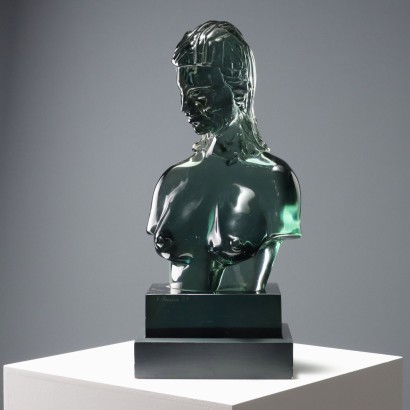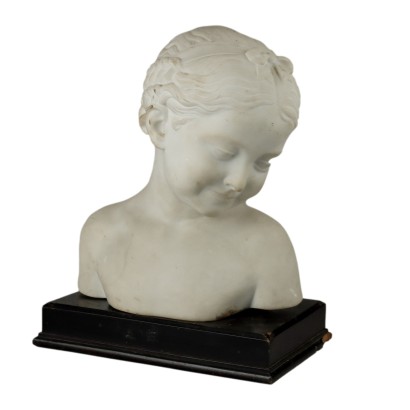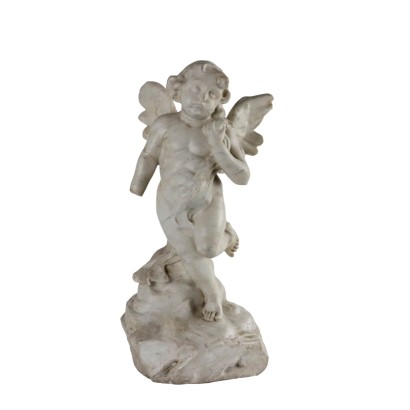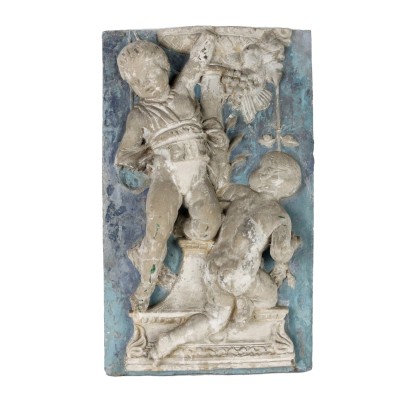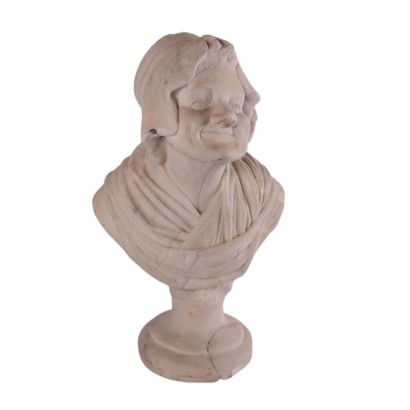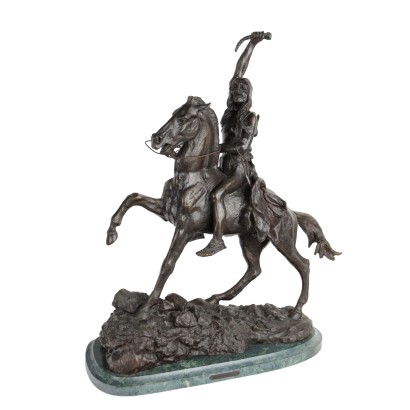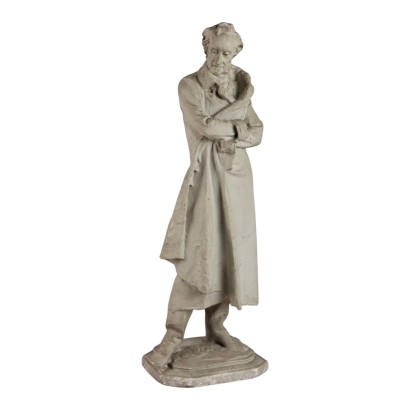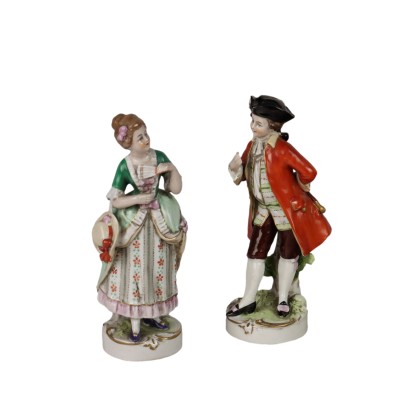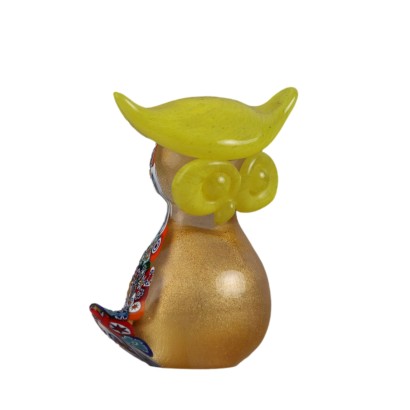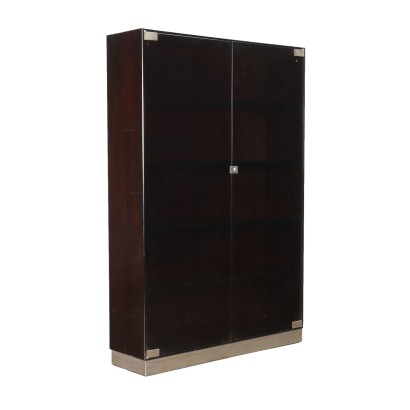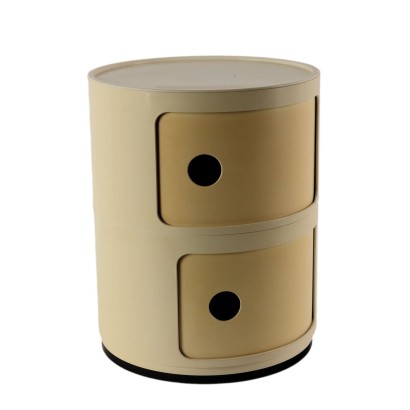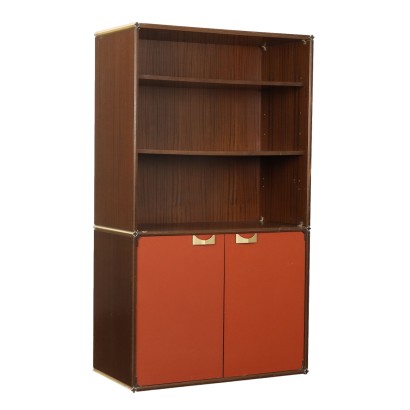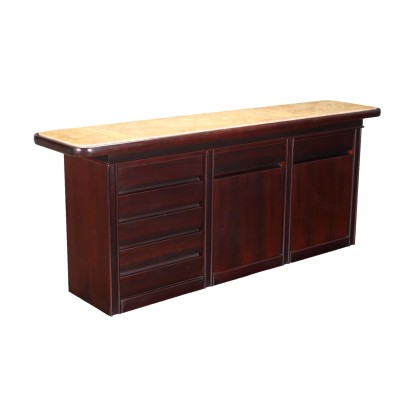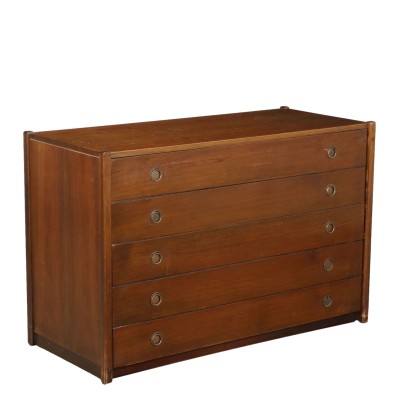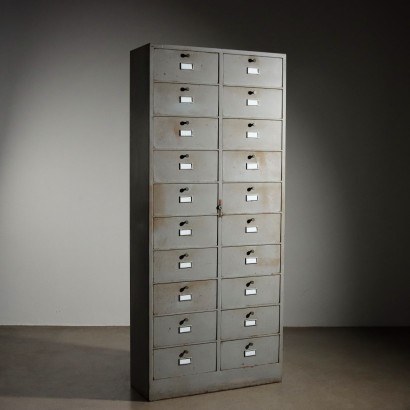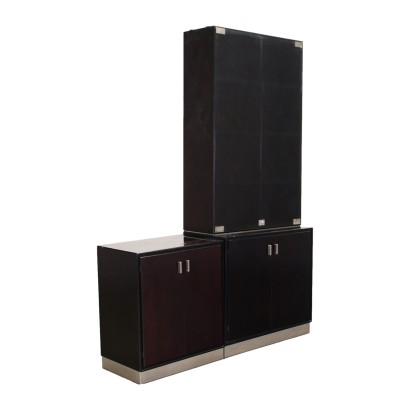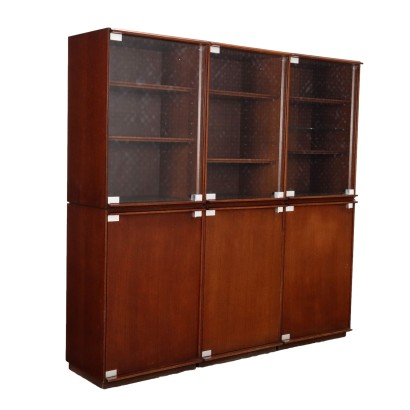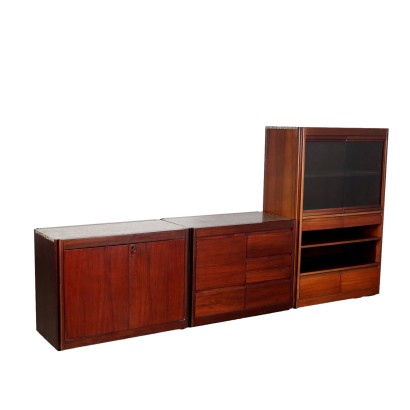Bust of a Young Woman in Glass Loredano Rosin - Italy 1975
Features
Italy 1975
Time: 1970s
Production country: Italy
Material: Glass
Description
Glass sculpture depicting the bust of a young woman. The author's signature and production date are engraved on the base.
Product Condition:
Item in good condition, shows small signs of wear. We try to present the real condition of the item as completely as possible with the photos. If some details are not clear from the photos, what is reported in the description is valid.
Dimensions (cm):
Height: 60
Width: 27
Depth: 20
Additional Information
Notes historical bibliographic
Loredano Rosin: genius of Murano glass. Born in Venice on January 10, 1936, Rosin began his human and professional adventure in the world of Murano glass in 1948 when his family moved from the historic center of Venice to the nearby island where his father Giovanni, “Nane Naso”, was employed as a glassblower in the processing of chemical products at the Franchetti furnace. At thirteen, Loredano immediately found work in the Domus glassworks, then specialized in the creation of traditional Venetian chandeliers, under the guidance of the master “Cocui Saor” (a.k.a. Romano Zanetti), to later dedicate himself to the creation of clown sculptures under the guidance of Giovannin Rossetto, known as “Bronzo”. After a long apprenticeship, thanks to which Rosin was able to learn the techniques and secrets of the glass art, from 1961 his career in the furnace had a sudden advancement and in that very year he began to work as a servant at the Luigi Pinzan glassworks, specialized in the creation of solid glass ornaments. Thanks to his innate manual ability, his activity as an assistant, however, lasted only one year because, in conjunction with the birth of the Cimarosti and Pinzan glassworks, Loredano was immediately promoted to master. Later, he also collaborated for a short period with the Ikos furnace of the Costantini brothers before opening, in 1964, his own furnace together with his friend Giuliano Mantoan and then, with his brother Mirco: ARTVET, with its multifaceted production (vases, clowns, ashtrays, cups) based on the processing of solid glass; : Immediately after the opening of the new glassworks, Loredano also called his younger brother Dino as his assistant, who from that moment on would always be at his side. Even if only for three weeks, in the mid-sixties Rosin worked alongside the master Ermanno Nason, being impressed by his skill in the working and modelling technique; this very brief period alongside Nason transformed his way of approaching the material, understanding how glass could not only be limited to the productions most in vogue at the time but also the ideal material for creating true works of art. The great turning point in his artistic career came in 1965 when Rosin met Egidio Costantini, who asked him to collaborate with the “Fucina degli Angeli” in the creation in glass of works designed or conceived by the greatest national and international contemporary artists of the time: from Picasso to Chagall, from Ernst to Arp, from Kokoshka to Cocteau, moving on to the Italians Fontana, Licata, Guidi and Guttuso. From then until 1974, Loredano, thanks to this and other important collaborations, became one of the main glass executors of the ideas of great artists and – at the same time – managed to develop a very personal and autonomous artistic vision of the work finally free from the Murano tradition in vogue until then. From 1968 to 1974 he was the first master at “Salviati & C.” and collaborated with famous artists such as Claire Falkenstein, Betha and Teff Sarasin. In 1975, together with his brother Dino, he inaugurated the studio “Vetreria Artistica Loredano Rosin” in which he was finally free to create glass sculptures of great beauty, rediscovering techniques and types of glass whose use had been lost over time such as, for example, chalcedony. Alternating with crystal, Rosin's chalcedony (created by adding silver nitrate to the mass during the melting phase in order to create in the glass the fluidity of the streaks of some hard stones, in particular the zoned agate) soon becomes the basis on which to model in the round a series of extraordinary works characterized by a plastic, soft and flexible modeling, which immediately arouse the interest of the public, thus decreeing his ascent to the top of Murano artistic production. : Favoring a personal and autonomous approach to artistic production, since the end of the experience with the “Fucina degli Angeli” he has refused any collaboration with other artists, making, over time, rare and targeted exceptions: in 1983 he created the Enchanted Nativity Scene with Pippo Madé, a work first exhibited in the Cathedral of Monreale in Palermo and, subsequently (1984), in the Upper Basilica of San Francesco in Assisi, while some works testify to his contribution to the creation of glass sculptures then decorated with designs engraved by the Venetian Vincenzo Eulisse. 1985 is the year in which Loredano Rosin leaves the national scene to begin a series of highly successful international exhibitions: first in the United States, immediately achieving extraordinary success in Philadelphia with the first personal exhibition of unpublished works at the Dorothy Lerner gallery, followed the following year by another personal exhibition at the Adele Rosen Gallery in Santa Barbara, California and one in London at Knightsbridge Interiors. Riding the wave of success he received, in 1987 he took another series of his sculptures to Japan, to Tokyo (Tokyo Mori), while the following year he returned to the United States to inaugurate, with his teaching, the first course in solid glass sculpture at the Pilchuck Glass School in Seattle; at the end of the course, again in Seattle (Sutton-White Gallery), he exhibited his works created during the lessons; during the same year he exhibited in a solo show in Toronto, at the Joseph Carrier Art Gallery. 1989 was the year in which Loredano Rosin was chosen to represent the artistic production of Murano as a speaker at the event “International Glass” in conjunction with the 19th Annual Symposium of Glass Art Society in Toronto, Canada, an event which also saw a memorable live demonstration of his work; in the same year he took his sculpture works to Norway, to the exhibition “Vetri di Murano: 1400-1989” at the Kunstindustrimuseet in Oslo. Unfortunately a tragic accident in the lagoon in the winter of 1991 put an end to the life of this very talented artist.Time: 1970s
1970sMaterial: Glass
Other customers have searched:
Oggettistica modernariato, oggetti di modernariato, oggetti anni '60, oggetti anni '70, oggetti anni '30, oggetti anni '40, oggetti anni '50, oggetti design..
La presentazione di Bruno Munari, un grande designer
Sul modernariato in generale:
From the Sixties to the Sixteenth Century – From the Sixteenth Century to the Sixties
Sedute design
Le sedute e la nascita del design
Sacco - la poltrona trasformista
Valigia - la lampada da viaggio
Pistillino - la natura che incontra il design
Eames lounge chair
Tizio by Artemide - l'equilibrio del movimento
Come dare un look mid century alla propria casa
Design scandinavo vs Design Italiano
Alla scoperta del modernariato
Approfondimenti
Se sei interessato all'oggettistica di modernariato, dai un'occhiata anche ai nostri approfondimenti sul tema: Piero Fornasetti e i suoi leggendari piattiLa presentazione di Bruno Munari, un grande designer
Sul modernariato in generale:
From the Sixties to the Sixteenth Century – From the Sixteenth Century to the Sixties
Sedute design
Le sedute e la nascita del design
Sacco - la poltrona trasformista
Valigia - la lampada da viaggio
Pistillino - la natura che incontra il design
Eames lounge chair
Tizio by Artemide - l'equilibrio del movimento
Come dare un look mid century alla propria casa
Design scandinavo vs Design Italiano
Alla scoperta del modernariato
Product availability
The product can be seen at Cambiago
Immediate availability
Ready for delivery within 2 working days from ordering the product.
Alternative proposals
It could also interest you

